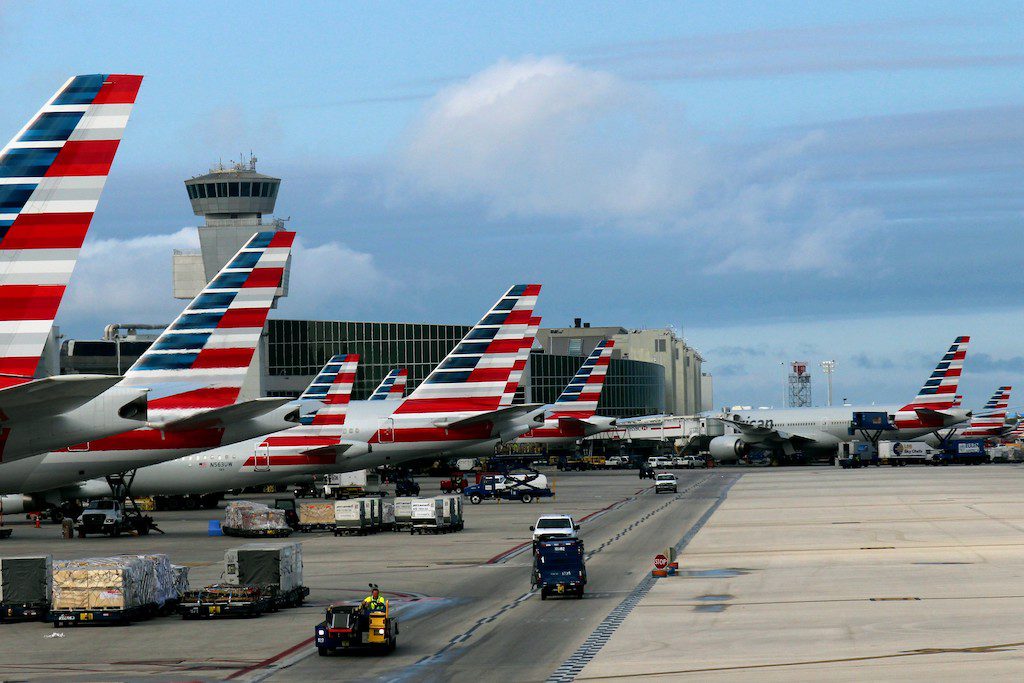Skift Take
American is cautiously optimistic about the summer ahead with plans to fly more and boost fares on its way back to profitability. But when the airline can hit that is still anyone's guess with business and long-haul international travel still largely absent in the recovery.
Bookings are rising and business travelers may be on the cusp of returning at American Airlines, allowing the carrier to begin turning its focus back to its pre-coronavirus pandemic financial playbook even as the red ink continues.
Fare sales are out and managing seat availability is in with system net bookings hitting 2019 levels during the past week, American executives said during its first quarter earnings call on Thursday. An impressive feat considering business and long-haul international travel — two traditional cash cows for the airline — are only back to about 20 percent of pre-crisis levels.
“Engineering bookings is not the issue anymore,” said American Chief Revenue Officer Vasu Raja during the call. “It is about getting yields back and getting RASM [revenue per available seat mile] back, especially in our domestic system.”
That’s a good shift for American, which, even after nearly $2 billion in financial relief from the federal government, still lost $1.25 billion during the first quarter. But it is not so good for those eager would-be travelers ready to live the industry’s new favorite phrase: “pent-up demand.” Fares are heading up after historic lows in 2020, especially to popular holiday destinations this summer, executives said Thursday.
To meet some of that leisure demand, American will fly roughly 90 percent of its 2019 domestic seats this summer. Executives said all of its more than 1,400 mainline and regional aircraft — save the nearly 150 planes that were retired during the crisis — will be back in the air this summer. This includes wide-body jets — Boeing 777s and 787s that have two aisles — plying domestic routes that were previously the domain of narrow-body aircraft, like from Dallas/Fort Worth and Miami to destinations including Las Vegas, Los Angeles, New York and San Juan.
But fundamentally American needs business and long-haul international travelers to return for it to regain its financial footing. CEO Doug Parker noted this, pointing out while flying wide-bodies on domestic routes may be their best use this summer, the jets will likely return to more lucrative long-haul flying by next year.
“We are a long way from where we need to be,” he said. “This crisis is not over … but there is no doubt the pace of this recovery is accelerating.”
Business and International Developments
Business and long-haul international travel remain challenges for American. The airline is hardly alone in this with competitors Delta Air Lines and United Airlines also facing struggling in both segments. The lagging return of corporate road warriors and long-haul trips, particularly compared to domestic leisure travel, is why industry trade groups do not expect a full air travel recovery until at least 2024.
American is seeing green shoots among domestic business travel. In the first quarter, small business demand increased “steadily” in the first quarter, while large corporates have begun indicating plans to return workers to the road in the third quarter, said American president Robert Isom.
“There are early signs of recovery for business,” he said. “An increasing number of our largest corporate accounts … [are] confirming in person board meetings, conferences and events for this year.”
Internationally, American expects a gradual recovery stretching out over years rather than quarters. Executives are “encouraged” by developments on possible travel corridors — like the one being discussed for between the U.S. and UK — but shied away from giving any concrete expectation on when, or if, they could happen.
Despite expectations of a gradual recovery in long-haul international flying, American joined competitors unveiling some very lengthy new routes this week. On Wednesday, it announced plans for new service between New York JFK and New Delhi as among a slow of new routes under its controversial alliance with JetBlue Airways. Delhi flights are due to begin on October 31, barring no tightening of travel restrictions between the U.S. and India. The latter is seeing a dramatic spike in Covid-19 infections with reports that its health system is “collapsing.”
On a positive alliance note, Raja said that bookings under the new JetBlue alliance had already propelled the New York-based carrier to American’s “largest global codeshare partner” in just the first three weeks.
And in Washington, D.C., a large business-centric hub for American, a long-awaited new concourse for the airline’s regional flights opened at Ronald Reagan Washington National Airport on Tuesday. The facility will allow American to fly more, larger jets with first class cabins to the airport as road warriors return.
First Quarter Numbers
Revenues at American fell by 52.9 percent year-over-year to $4 billion, and expenses by 51.9 percent to $5.3 billion in the first quarter. Its net loss totaled $2.7 billion before the benefit from federal payroll relief. And on a positive note, the airline turned its cash burn positive before $8 million in debt payments in March.
Looking forward American anticipates revenue coming in at 60 percent of 2019 levels — or about $7.2 billion — in the second quarter. Passenger capacity — measured by available seat miles, not actual seats — will be at 70 to 75 percent of two years ago.
The Daily Newsletter
Our daily coverage of the global travel industry. Written by editors and analysts from across Skift’s brands.
Have a confidential tip for Skift? Get in touch
